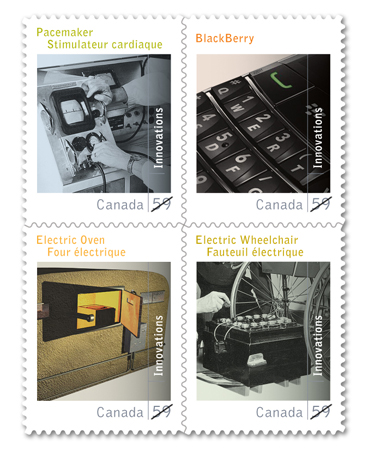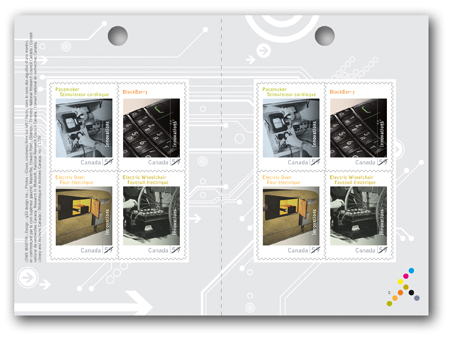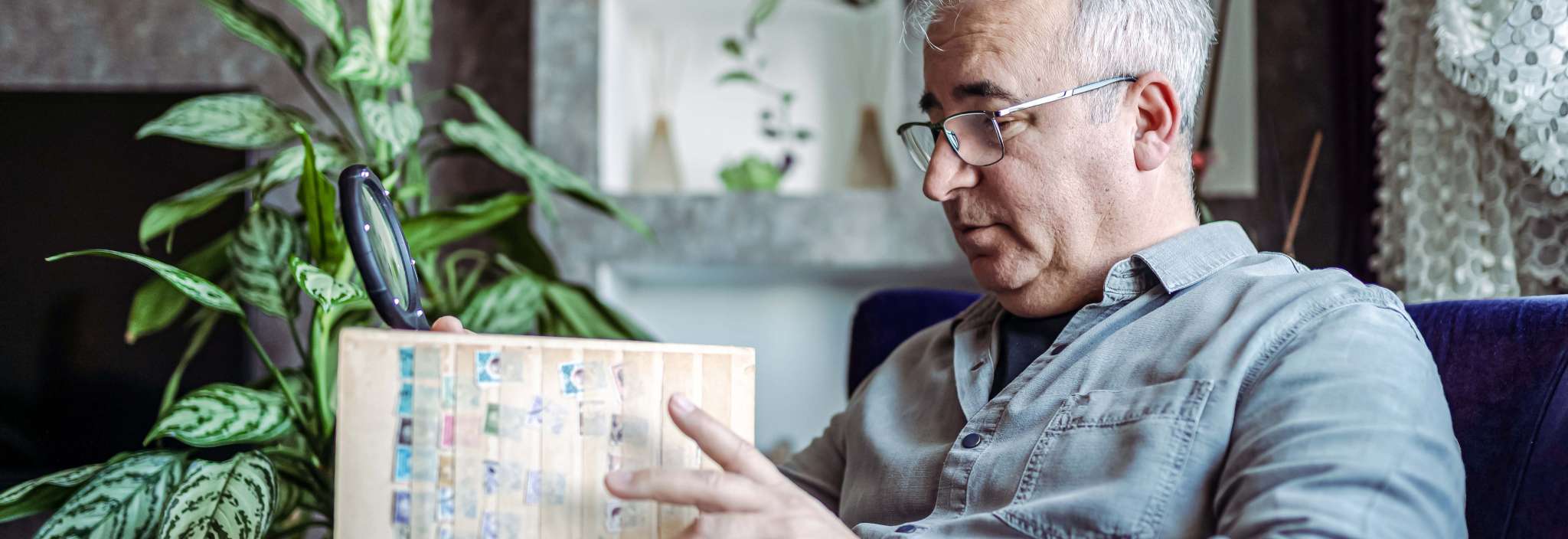Canadian Innovations
August 17, 2011

Canadians are an inventive bunch. In fact, Canadian inventors have patented more than a million inventions—but far too many of us would be unable to name more than just a few. From Ginger Ale to insulin, from Bombardier’s “Ski-doo” to Plante’s goalie mask, plus the “Jolly Jumper,” instant mashed potatoes, the lawn sprinkler and the modern plastic garbage bag, items created from Canadian imagination and insight are a part of our daily lives.
This stamp issue shines a spotlight on the “Made in Canada” leaps of science and creativity that have changed lives at home and abroad.
Canadian cooks can thank inventor Thomas Ahearn for making their lives much easier. In 1892, he invented the first electric oven. The original model was made of brick, 2 metres (six feet) wide by 2 metres (six feet) high and, according to the press at the time, hot enough to “roast an ox.”
Canada has always been at the forefront of advances in medical technology and health-care related inventions. One of Canada’s most prolific inventors, George J. Klein, created an electric wheelchair that offered mobility to quadriplegics and changed lives for the better. Dr. Klein’s list of inventions also includes the microsurgical staple gun and internationally significant innovations in aviation and space technologies.
In 1950, while studying hypothermia, Dr. John Hopps developed the world’s first cardiac pacemaker, which brought hope to those suffering with heart disease. In his experiments using radio frequency heating to restore body temperature, he learned that if a heart stopped beating due to cooling, it could be started again by mechanical or electric artificial stimulation. The first version of the now common medical device was external, far too large to be placed inside the human body. Improvements and miniaturization finally allowed for an unobtrusive version that could be surgically implanted.
While smart phones and other communications devices, as well as technologies such as push email and mobile apps, are commonplace now, they were nearly the stuff of science fiction in 1999, when Research in Motion (RIM) founders Mike Lazaridis and Jim Balsillie introduced the now iconic BlackBerry®. Their invention freed information workers from their desks and changed the way the world communicates. Subsequent versions and continuous innovation have kept RIM and its BlackBerry device a front runner in the massive smart phone market.
How do you depict the genius of Canadian inventions on a stamp? According to q30 inc. senior designer Karen Henricks, “Given that the innovations span such a long timeline — from the oven in 1892 to the modern BlackBerry — our design challenge was to find a way to visually link the four stamps. We chose consistent cropping and angles, as well as a palette of co-ordinated colour tints and type, to tie the stamps together as a series.”
Stamp Design Manager Danielle Trottier adds, “This is one of those truly Canadian issues that adheres very closely to the core of our mandate, which is to celebrate and instill pride in the accomplishments of Canadians. The inventors behind these innovations were, unfortunately, often unsung heroes whose ideas and determination changed the world and made lives better, all the while showing what Canadians could bring to the world stage.”

Booklet of 8 stamps
$4.72
- Product #: 413799111
- Denomination: 4 x 59¢
- Design: q30 design inc.
- Dimensions: 24.75 mm x 32.25 mm (vertical)
- Printer: Lowe-Martin
- Printing Process: Lithography in 8 colours
- Quantity: 2,250,000
- Gum Type: Pressure sensitive
- Perforations: Simulated perforation
- Tagging: General, 4 sides
- Photography: National Reseach Council Canada, Research In Motion®, © Library and Archives Canada, nlc-11276
- Paper Type: Tullis Russell


